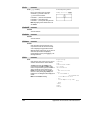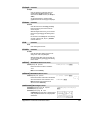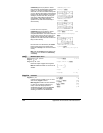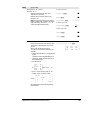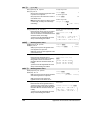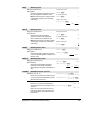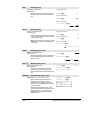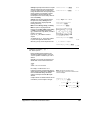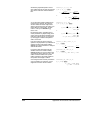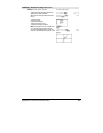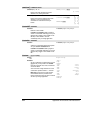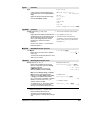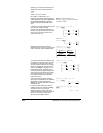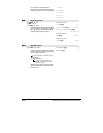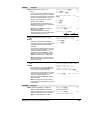
800 Appendix A: Functions and Instructions
Simultaneous
polynomial
equations can have
extra variables that have no values, but represent
given numeric values that could be substituted
later.
cSolve(u_ùv_ìu_=c_ùv_ and
v_^2=ëu_,{u_,v_}) ¸
u_=
ë(
1ì4øc_+1)
2
4
and v_=
1ì4øc_+1
2
or
u_= and v_=
ë(
1ì4øc_ì1)
2
or u_=0 and v_=0
You can also include solution variables that do
not appear in the equations. These solutions
show how families of solutions might contain
arbitrary constants of the form @
k
, where
k
is an
integer suffix from 1 through 255. The suffix
resets to 1 when you use
ClrHome or ƒ
8:Clear Home.
For polynomial systems, computation time or
memory exhaustion may depend strongly on the
order in which you list solution variables. If your
initial choice exhausts memory or your patience,
try rearranging the variables in the equations
and/or
varOrGuess
list.
cSolve(u_ùv_ìu_=v_ and
v_^2=ëu_,{u_,v_,w_}) ¸
u_=1/2 +
3
2
ø
i
and v_=1/2 ì
3
2
ø
i
and w_=@1
or
u_=1/2 ì
3
2
ø
i
and v_=1/2 +
3
2
ø
i
and w_=@1
or u_=0 and v_=0 and w_=@1
If you do not include any guesses and if any
equation is non-polynomial in any variable but all
equations are linear in all solution variables,
cSolve() uses Gaussian elimination to attempt to
determine all solutions.
cSolve(u_+v_=
e
^(w_) and u_ìv_=
i
,
{u_,v_}) ¸
u_=
e
w_
2
+1/2ø
i
and v_=
e
w_
ìi
2
If a system is neither polynomial in all of its
variables nor linear in its solution variables,
cSolve() determines at most one solution using
an approximate iterative method. To do so, the
number of solution variables must equal the
number of equations, and all other variables in
the equations must simplify to numbers.
cSolve(
e
^(z_)=w_ and w_=z_^2,
{w_,z_}) ¸
w_=.494… and z_=ë.703…
A non-real guess is often necessary to determine
a non-real solution. For convergence, a guess
might have to be rather close to a solution.
cSolve(
e
^(z_)=w_ and w_=z_^2,
{w_,z_=1+
i
}) ¸
w_=.149… + 4.891…ø
i
and
z_=1.588… + 1.540…ø
i



